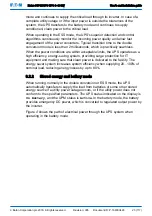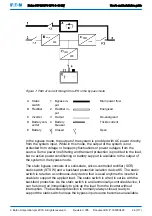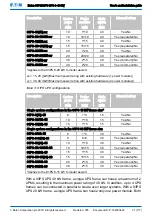
mode and continues to supply the critical load through its inverter. In case of a
complete utility outage or if the input power is outside the tolerances of the
system, the UPS transfers to the battery mode and continues to supply
conditioned, clean power to the critical load.
When operating in the ESS mode, the UPS's superior detection and control
algorithms continuously monitor the incoming power quality and allow fast
engagement of the power converters. Typical transition time to the double
conversion mode is less than 2 milliseconds, which is practically seamless.
When the power conditions are within acceptable limits, the UPS operates as a
high efficiency, energy-saving system, providing surge protection for IT
equipment and making sure that clean power is delivered to the facility. The
energy saver system increases system efficiency when supplying 20...100% of
nominal load, reducing energy losses by up to 80%.
3.2.2
Stored energy and battery mode
When running normally in the double conversion or ESS mode, the UPS
automatically transfers to supply the load from batteries or some other stored
energy source if a utility power outage occurs, or if the utility power does not
conform to the specified parameters. The UPS status indicated on the display is
On Battery
, and the UPM status is
Active
. In the battery mode, the battery
provides emergency DC power, which is converted to regulated output power by
the inverter.
Figure
shows the path of electrical power through the UPS system when
operating in the battery mode.
Eaton 91PS/93PS UPS 8–40 kW
User's and installation guide
©
Eaton Corporation plc 2018. All rights reserved.
Revision: 005
Document ID: P-164000493
23 (117)
















































